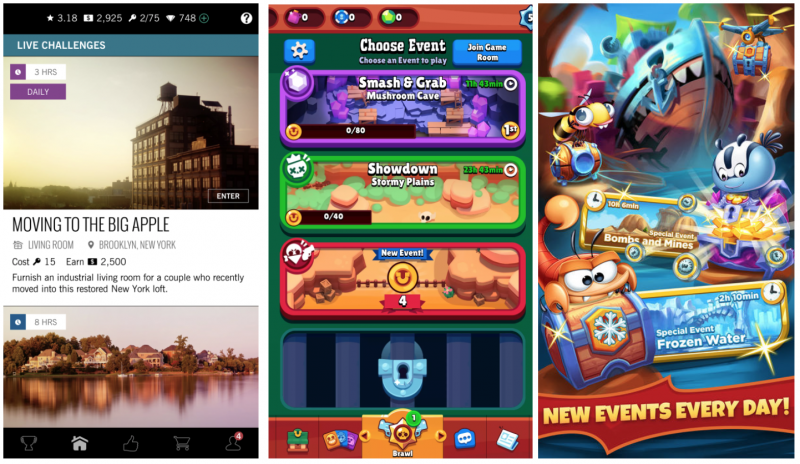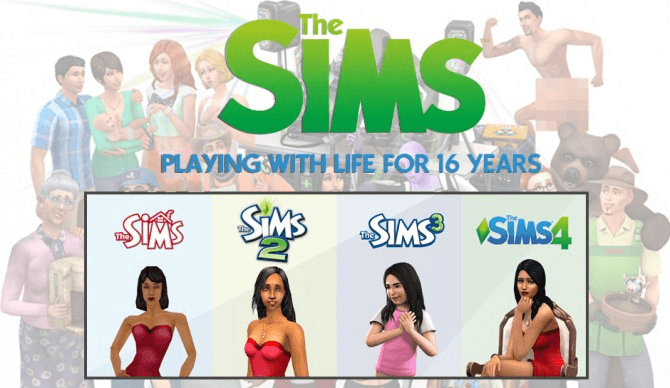
Sims Mobile has big shoes to fill. Everyone knows The Sims. The sandbox life simulation has not only defined its own genre but counts among the top selling game series ever. After four major releases on PC/consoles and countless DLCs, EA and Maxis come with a second big attempt to succeed in the mobile sphere. Sims Mobile (Android, iOS) launched globally early March 2018. It’s hard to avoid comparison to the original PC game given it was made by the same developer and publisher, as well as visual style and gameplay elements.
What makes The Sims franchise stand out is by far the freedom of choice in playing out your personal story. Therefore it’s interesting to take a look what kind of changes are introduced in transition to a free-to-play model, and whether these changes are successful.
Guest Author: Eva Grillova
Senior Game Designer, with history at Disney Prague and Wooga.
Check out our Free to Play Game Design Bible Here
LOOKING BACK AT PC SIMS
The genius of the original Sims PC franchise lies in it’s approachability. It is easy to understand what is expected from the player and the Sim alike: The actions and choices are intuitive, learned from our own life experiences. The metrics of success do not have to be explained, because they are inherently ours: Make more money, get a promotion, get married. The game builds on our own fantasies how how we live our lives.
Matt Brown, current studio technical director of EA Maxis, spoke at this year’s GDC about emergent narrative in the original Sims, and how the game combines a natural human tendency to nurture for others with the Maslow hierarchy of needs.
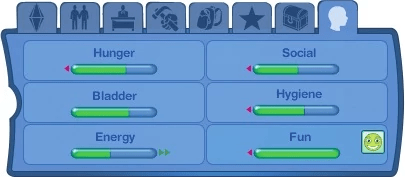
Each character has needs. Social doesn’t matter if your bladder is full! (Sims 3)
These needs create the baseline structure of the game:
Sim is hungry →
Sim needs a fridge to make food →
Player needs to buy a fridge →
Player needs money →
Sim needs to get a job!
Furthermore, a Sim has some automated behaviour that tries to address pressing needs and loosely following on whatever actions they’ve been doing before. A Sim who wants to become a chef and has a career in a restaurant is more likely to start cooking on his own. If you have a house with multiple Sims, this is the developers helping you to keep the Sims on the path you’ve chosen for them without having to control every moment of their lives.
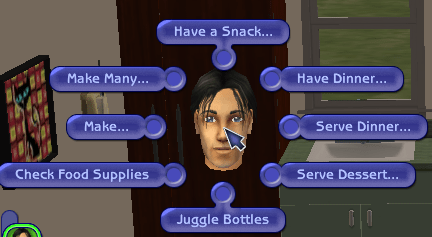
Example of choices when it comes to food and cooking
At the same time, the feedback to any action is visible and gives it meaning and progress:

Sim fishing and improving his fishing skill
Tracking actions rewards you for taking them while in real life these are not nearly as gratifying. For example:
Read a book → See the Sim’s “logic” skill go up
Talk to a person → Watch your relationship level with this person increase
This mechanic also builds an immediate next goal: Read books to level up your logic skill to get a better career. Talk to a person until their relationship reaches a high level, so you can get married and have kids.
All in all, the game is a great combination of actions you can control and those you have to respond to (burglar in your house). Regardless of your story: freedom, feedback and intuitive goals are the trademark features of the brand and the design principles on which the narrative is built.
Does free-to-play versions achieve this?
THE SIMS GO FREE TO PLAY
As a shift to F2P, The Sims actually had two previous attempts:
The Sims Social (the Facebook game) ruled the top charts for a bit but then quickly fell off.
Sims FreePlay (mobile game) is still being updated and has been a staple of the top games on mobile since 2011. The mobile version used timers to break up the sessions and provide progress in times of player’s absence. These timers break the flow and make the game feel very different from the original, but it keeps its stable audience, presumably because the it stays quite true to the brand’s principles, keeping the narrative choices similar as in The Sims.
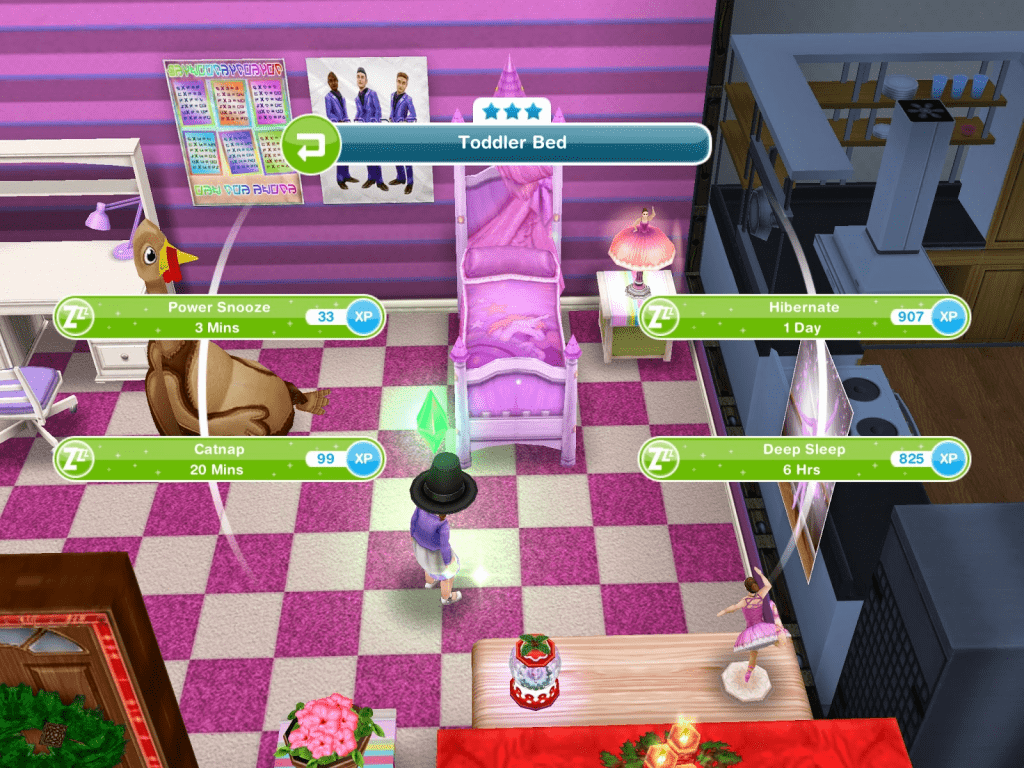
Use of timers in Sims: FreePlay. Each Sim’s action takes time.
The new Sims Mobile game was soft launched in May 2017 in Brazil, and launched globally this year in March. From very first moment you notice how different the game’s visuals are. It walked a long way from the quirky, robotic animations in Sims FreePlay into a very polished, full 3D experience with a wide range of animations and short loading times, resembling the Sims 4 PC game.
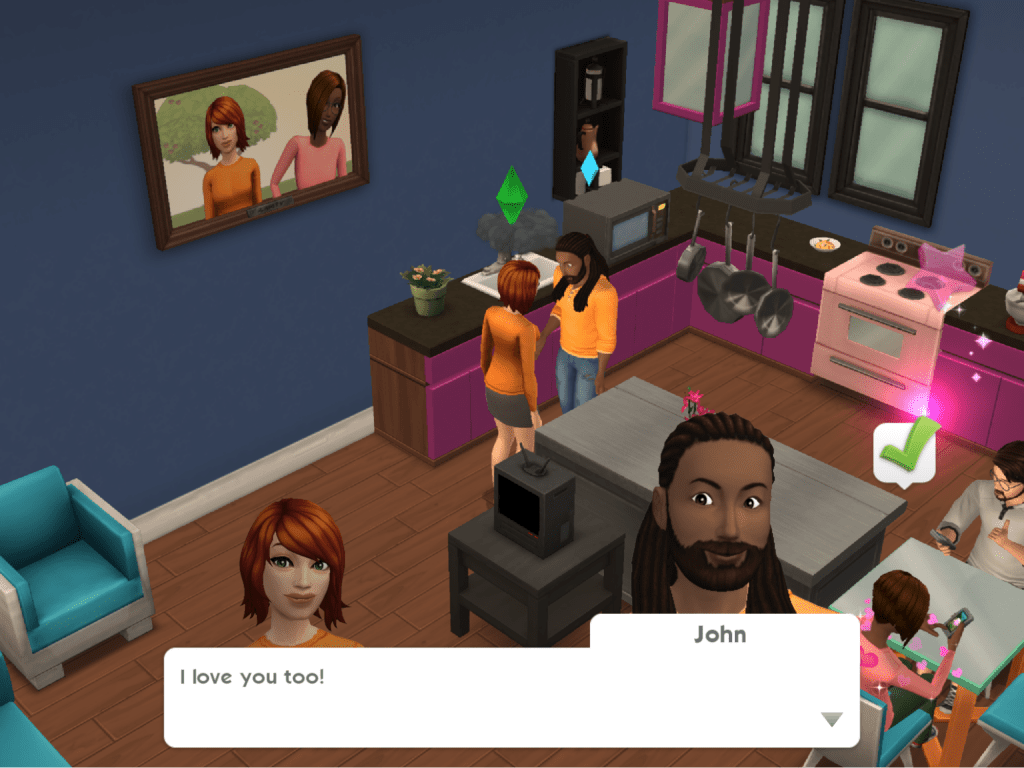
The Latest Sims Mobile: It Looks almost like the PC game!
So how did the latest Sims Mobile game do?
In the past weeks, the old game, Sims FreePlay, kept its position in the Top 100 grossing. The new Sims Mobile hasn’t maintained a rank in the top grossing, roughly flattening at $50K/day according to Sensor Tower across Android + iOS.
Such numbers are far from stellar for a game with such high visual polish that spent almost a year in soft launch and taps into the faithful audience of the franchise. So what happened? Why didn’t the Sims Mobile leapfrog Sims Freeplay?
Let’s first dive into the game, and then talk about the issues.
FOCUS ON FEWER SIMS: FAMILY AND HEIRLOOMS
Instead of controlling an unlimited amount of characters and houses like in The Sims and Sims FreePlay, here you can control only up to four characters that share one house.
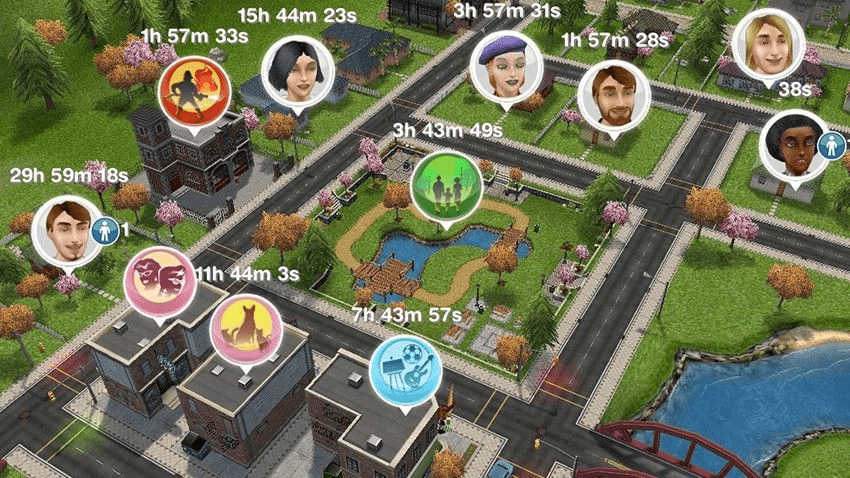
Town in Sims FreePlay: Each house is controlled by the player
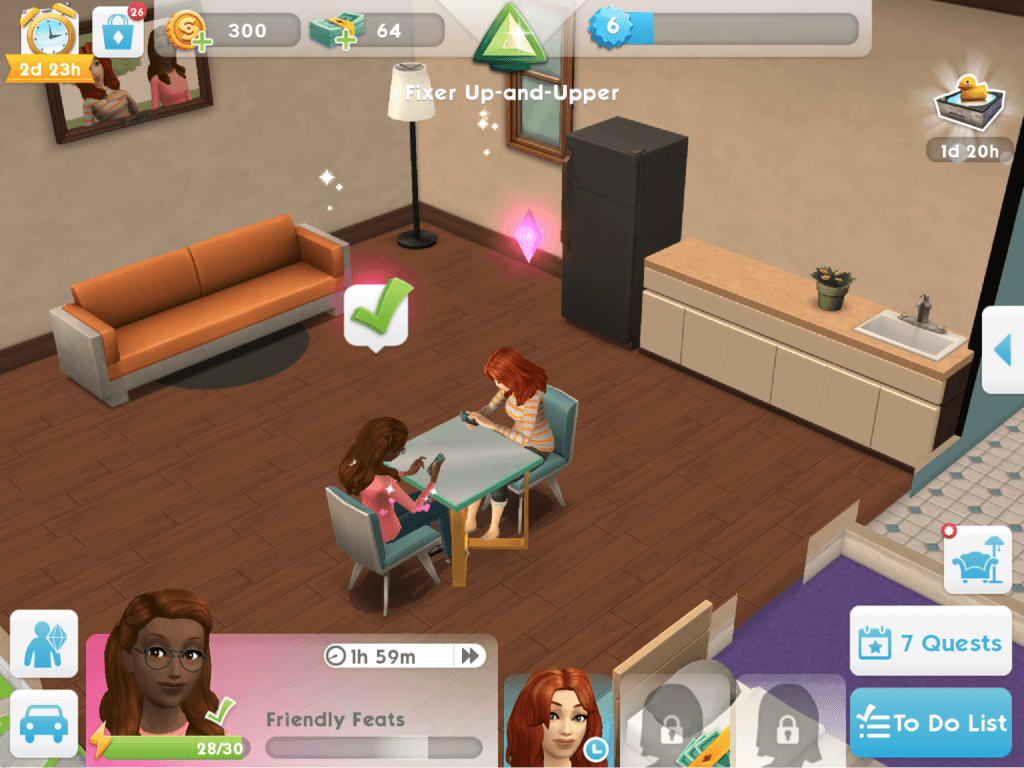
In Sims Mobile, you start with two Sims, two other slots can be purchased.
However to keep things interesting and let the player live different stories, at some point Sims can retire. This frees a slot for a new generation. If you choose to retire the Sim, they will hang out around the house, offering special actions rewarding Heirloom tokens (family currency), and eventually will be “moved out” (to a farm upstate) and permanently gone.
If you have a baby, similar process happens for it to grow up: From a toddler to a baby to a teenager to an adult.
Heirloom tokens allow you to purchase lucky charms that unlock and boost traits you can assign to your Sims.
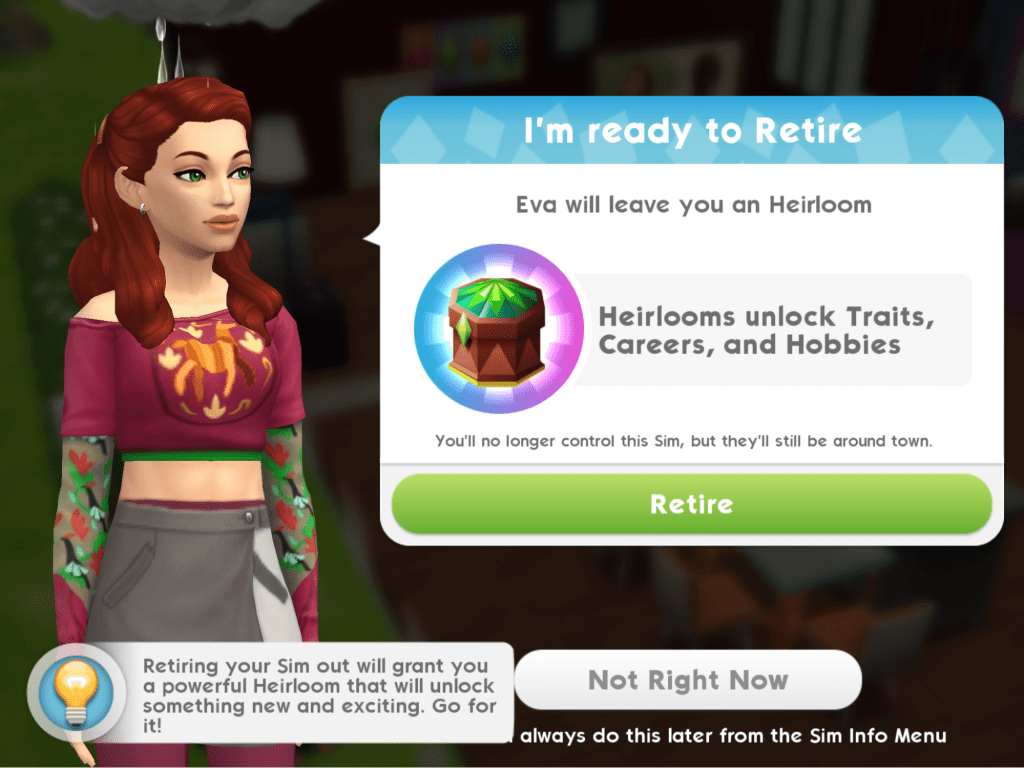
Retirement and new Heirloom
The system works well: Player doesn’t get overwhelmed by controlling too many Sims, exploring differently flavoured stories comes naturally with new characters, and last but not least there is a tangible heritage from the previous generation, which is a great metaphor. It also serves as a retention mechanic for achievement-focused players.
Focusing player’s attention on a limited amount of characters and creating a heritage achievement system is definitely a good step for a mobile game.
SIM PROGRESSION THROUGH STORIES AND EVENTS
As a player, you can assign your Sims to events, which are basically quests with different duration. Events are part of Stories: Career, hobby and relationships. For hobbies and careers, only one can be active at a time for each Sim and switching costs Simoleons, but relationships can be explored in parallel, which keeps the game to one of the most cherished traits of the original. The only limited resource here is player’s time.
Each Sim can be assigned to one event at a time, and it will finish itself. This lets you progress without actively playing.

Stories serve as achievements; finishing one will require significant player dedication
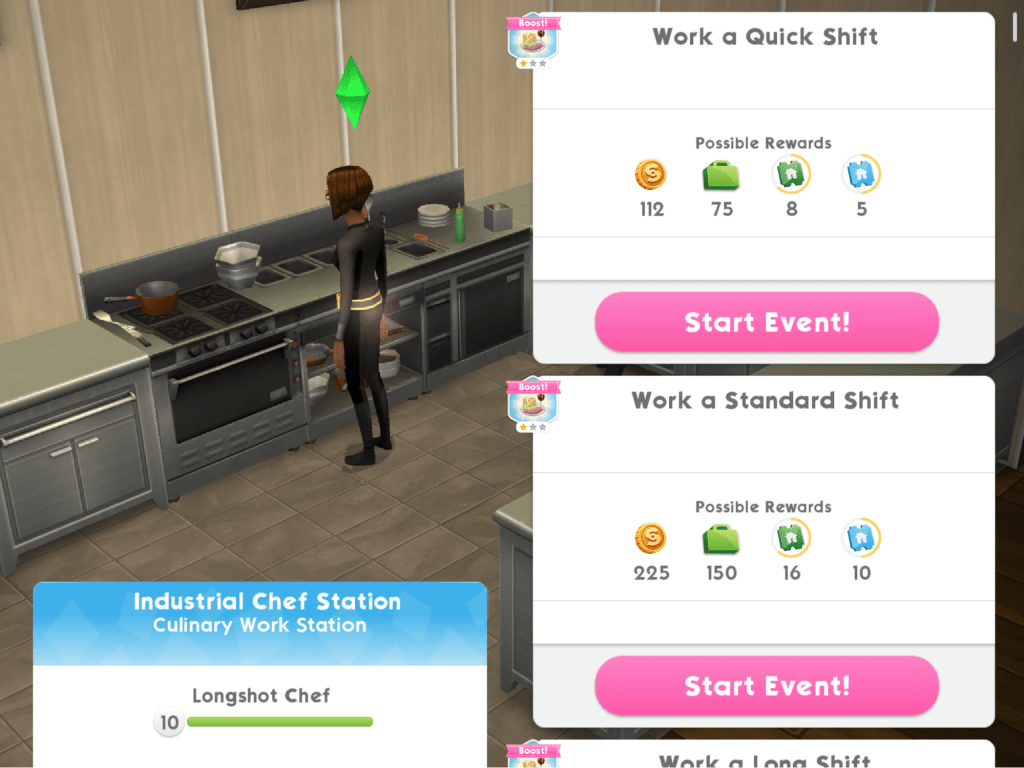
Selecting an event: The longer, the bigger rewards
To give player a chance to act, each Sim also has energy that can be used to perform optional actions within the event to speed up the timer and finish earlier. Player chooses the actions through interaction points that are only available during the event.
The events feed both into the player progression and the Sim progression. It ties the two loops together: Completing an event means XP for the player, and a progression in the story for the Sim.
DECORATING YOUR HOME
Built on top is the decoration loop, which loosely connects to the overall progression loop described above. There are two progression tracks: Player level and Vanity level:

Player’s XP comes mainly from completing events. They unlock new parts of town and careers, furniture, building blocks and outfits. Decorating and buying clothes increases vanity level, which serves as a visible comparison between you and your in-game friends and unlocks more space in the house.
The whole loop then looks like this:
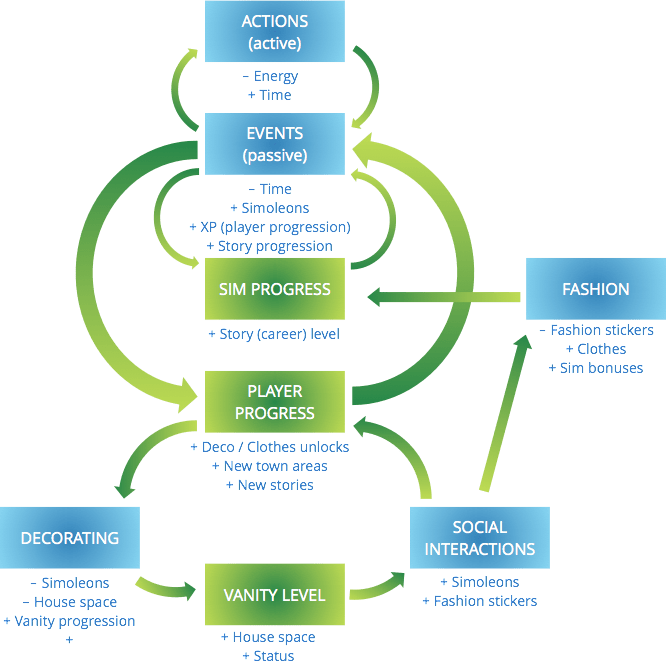
From this graph: the two loops (sim progress and player progress) feed into decorating. Therefore the player’s motivation should lie mainly there. The motivation to complete the loop is tied to the social driver of comparing houses and clothes with other players.
DECORATING YOUR SIM
Clothes and cosmetics for your Sims are different than decorations. These cost Simoleons (soft currency) or hard currency and add to your overall Vanity level… but do not have game effect.
To get clothes with an in-game effect you have to go to a special designer that will generate random — and very unique — clothes, giving you a boost for an activity and usually highlighted with particles.

Izzy’s fashion studio
These outfits tend to catch most attention from other players and feed into its own tiny loop of social encounters:
- Being seen by other players can earn you Stickers (that are basically likes)
- those are transferred into fashion tokens
- Fashion tokens can be traded in Izzy’s studios for different/better designs
To make your Sim visible to other players, you have to attend parties.

You can throw and visit thematic parties (wedding party when you get married, music party when you play guitar as a hobby etc.). These happen in parallel with other players. While the actions you perform are asynchronous (and act same as actions within an event), you do have some option to interact, such as a real time chat with all the participants.
SOCIAL SIMS: MEETING STRANGERS
No Sim game would be complete without all the wonderful strangers you can meet and Sims Mobile take some steps out of the single player by introducing an asynchronous system in which your neighbourhood is populated partly by NPCs and partly by other players’ Sims.
You are assigned to a group of players and for you, your neighbourhood is frequented by the same characters: allowing you to slowly build relationships with them.
This resembles well a live neighbourhood. Sims you befriend will stick around, being more likely to pass by your house. Sims you don’t care about you will stop seeing — and you won’t care. It would be interesting to know how these neighbourhoods are updated over time; whether new players are added when the old ones churn.
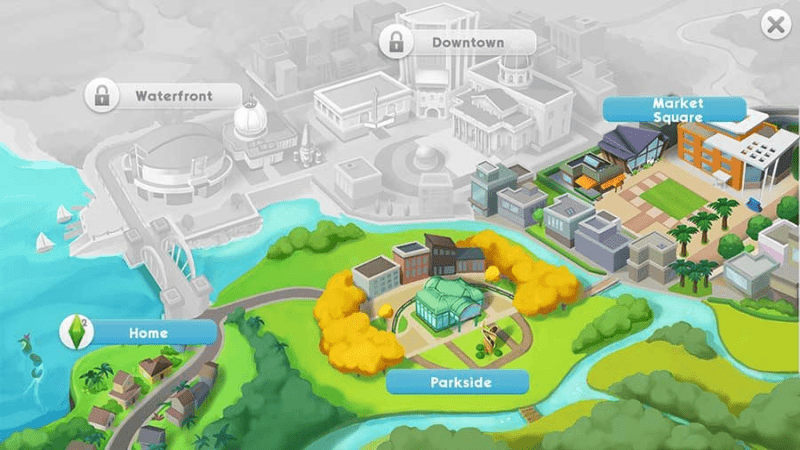
Map of the locations
It is here, at the end of the loop, where the real issues with Sims Mobile start to emerge:
The social loop doesn’t feed strongly back into the core loop and leaves the player feeling unrewarded
The social loop is way too far from the core to serve as motivation, and as I’ll show, it’s not sufficient to drive player through the game.
Let’s summarize the collected issues and go deeper into them.
THE 3 REASONS WHY SIMS MOBILE IS STRUGGLING
While the first part focused on visible systemic changes that were introduced to streamline the game for f2p and mobile, in this part I will talk more about design under the hood in order to get to the answer for our initial question: Why is the game not performing well.
I want to post a hypothesis: We’re seeing the game struggling because it lacks meaningful choices or goals, it mechanises motivations, and it doesn’t reward the player.
It becomes clear soon after few days of playing: The core design of the mobile game is at odds with what made the PC game so successful.
What do I mean by that?
- The nurturing and narrative aspects are suppressed
- The progression doesn’t validate player’s time and investment
- The core loop is broken
These issues do not exist in vacuum, but they are the biggest part of the systemic oversight of player motivation. As I’ll show, the lack of meaningful, immediate actions diminishes ability to care for your Sims. Hard-to-read progression defies a will to grind for better objects. Funneling the core loop into social leaves the player out to dry without feeling rewarded.
Let’s look at these issues from the ground up; from the small things to the biggest one.
ISSUE #1: NURTURING AND NARRATIVE
When sims have needs… The nurturing aspect from the original Sims game was excellent. The needs system in The Sims have three main benefits:
They give players immediate call to actions
They build narrative
They create need for better items
These combine into the loop I described earlier:
Sim is hungry →
Sim needs a fridge to make food →
Player needs to buy a fridge →
Player needs money →
Sim needs to get a job
Through intrinsic motivation (Sim is hungry) comes care (I need to care) and attachment. Caring for the needs is the building block of the game, like swapping candies in CCS, you’ll repeat this action again and again, driven by curiosity what happens next.
By completing these steps more complex needs emerge for the Sim and the player alike: What about relationships or career? How do I afford a better house?
Because Sims need the player, the player cares for the Sims. This is where nurturing builds the narrative: Completing these steps naturally tells the story. Because of the combination of intuitive, human needs, the ability to fulfill them through game mechanics and a clear feedback, the game doesn’t need to take the player by the hand.
And when they don’t have needs…
Originally, setting up your house is finding an intersection of affordability, function and personal expression. Furniture caters the needs or improves skills (learning). Better furniture makes for faster progression, and granular improvements to your house also improve your Sims’ overall well-being; Sims want to live in nice houses.
In Sims Mobile, players can still interact with the furniture but since no needs are present, the interaction doesn’t provide any feedback, neither for the Sim or the player.
Player is therefore left with limited motivation to purchase furniture. The only game accepted push to decorate comes from the need to improve their vanity. Dropping stats and gameplay impact from furniture for the sake of a simplified experience cuts a major value of the experience.
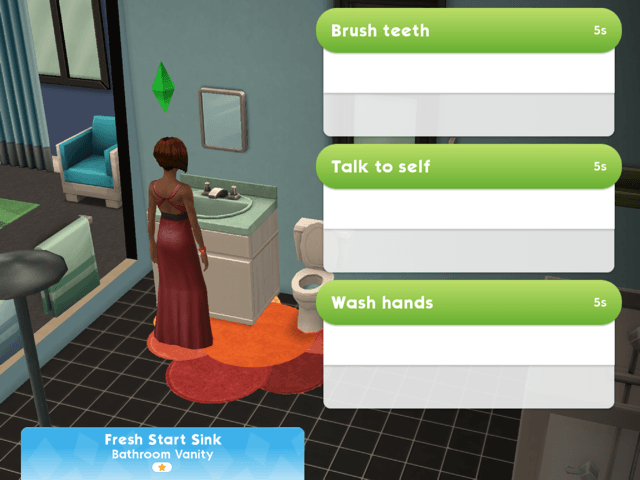
Without feedback, doing these actions is unnecessary
Without this rewarding loop from furniture, a whole part of the game disappears that could have served as a compelling experience for a casual audience. Watching TV while playing Candy Crush is a good example, however games with metagame (building on ownership and personalisation) are even a better one: Interacting with your game with a slight sense of progress can be a great and rewarding activity. It further fosters the ownership of the space you’ve built. Having a reason to stick around meaningfully makes you retain better.
In Sims Mobile this leads to players coming in only for short, effective sessions. The intrinsic narrative of building up your sim and collecting furniture is replaced with the extrinsic motivation of just completing the the stories/quests for rewards and progress. Players that are coming in just for extrinsic motivation (rewards and coins) won’t stick around for long. They eventually need intrinsic motivation (social proof) to retain for the long haul.
THE STORIES ARE PRE-TOLD
Stories are the building blocks of Sims’ lives. Looking at an example of a relationship story: When you meet a new Sim, you choose one of three introductions: Friendly, romantic or confrontational. This determines your whole story with this particular Sim:
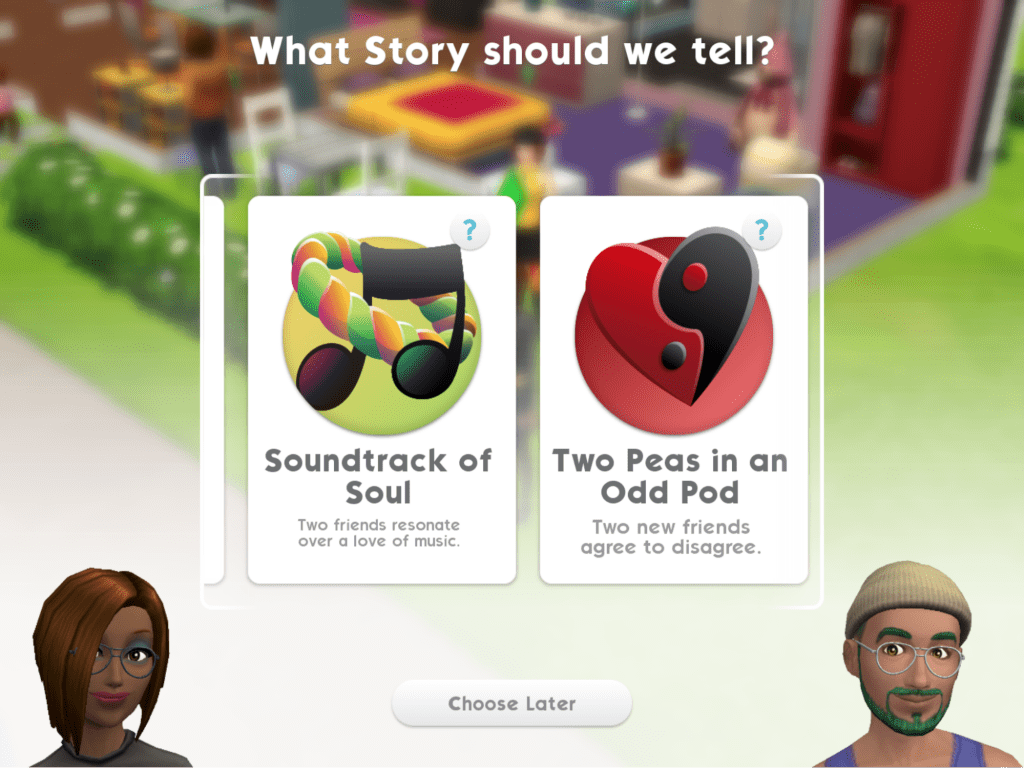
Choosing a story for two Sims
Each story is pre-scripted which lowers its replayability
Here The Sims Mobile misses out on what made the PC version of The Sims so successful: it’s accurate portrayal of relationships in real life. Relationships are ever changing and it’s unclear where things are going. Locking down a relationship into a pre-set story pushes you down a path with no option to take a side road apart from abandoning the progress in the story.
Through this, the motivation to progress becomes extrinsic since the choice of what happens next has been taken away. There is no surprise, no option to grab the steering wheel and have a fight in a romantic relationship. Pursuing achievements also takes away the option to play freely: Instead of playing what I want, I play what I want to complete, creating a detachment to my Sim.
The removal of the nurture aspect has huge impact both on the system and the player. It takes away natural onboarding and therefore complicates a relationship you could have built to your characters. It reduces the internal motivation by making the play aspect insignificant.
By attaching story progression to events only, the game builds a pre-set habit of collecting rewards, assigning events and leaving the session. A player never builds up a connection to their Sims which is not healthy for long term retention.
ISSUE #2: THE PUNISHING PROGRESSION
After playing the game for some time, you may start feeling like you’re not progressing. Only after looking closer at the event system it starts to be apparent why. The game includes clear progression, but they are not intuitive and make it hard for players to perceive their progression.
ENERGY: PROGRESSION WITHIN EVENTS
To recap: Events have varied durations that player can choose from. While in an event, they can use energy to perform actions and speed up the timer.
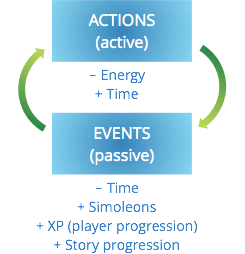
The event system is a main source of the player progression and coins
The energy is bound to the events: Using more energy means the player can finish more events and progress faster.
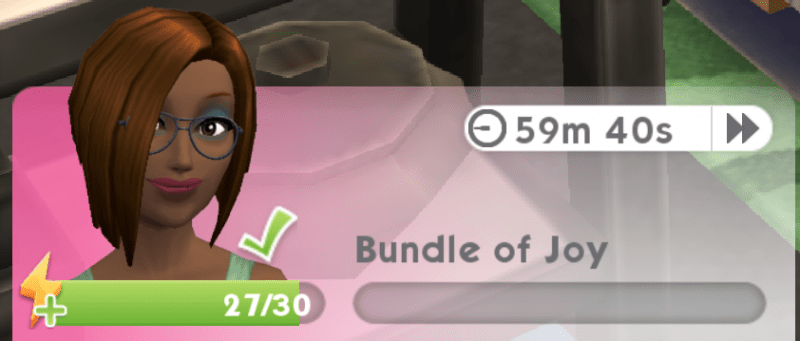
Each Sim has their own energy
Doing that sounds like a good idea: the player can engage with the game with visible progress in the event, and they overall get more done in the same time. But, it doesn’t feel good.
Here’s the first problematic part: You can select actions that are meaningful to you, but the result of a story event is the same regardless of the input. You will level up a relationship with your sweetheart whether you are cooking, watching TV, or talking about romantic plans. Or if you leave the game and come back later. Within each event the relationship between energy and time discount is the same. That further undermines player’s choice of actions (from event’s perspective they are all the same).
Next to actions with no game impact (outside of event) we now have mechanical actions. You’re bound to the result from the start. It’s like sitting at a math test, knowing that you can wait it out without writing anything, because in the end you will pass.
The result is: Energy doesn’t have story value. Or, to put it differently, energy is merely a means to grind.
Second problematic part is hidden in how relationship between energy and event XP.
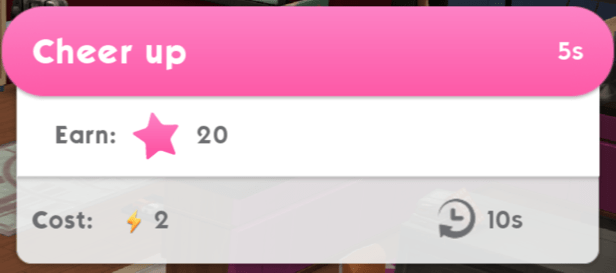
For this action, player earns 20 event XP
While events in different career levels have same duration, using energy provides smaller discount on higher levels as the absolute amount of event XP grows. It’s an invisible cost to your progression.
At the same time, it’s not clear if your energy will be enough to get through an event as the absolute amount of event XP needed isn’t shown. In reality, the game value of energy is determined by the event type (typically family events go very fast), career level and quest duration. As a result, player has no idea what progress to expect in a session, which undermines their will to plan and set goals.
Even when this behaviour is not technically in a way of playing the game, it shows that energy is designed and implemented into other systems only for gating and pacing: It only really starts to matter if you push for event completion in a given time (in live operations for example).
LEVELLING UP EVENTS
In quest based games, reward is usually a function of game progression and duration of the quest.
Simple progression can expand rewards: With player’s level the reward grows. Or it can grow the quest timers: Players need to come back less often, which is a common practice in F2P games to lower session amount over time and not wear the retaining player out.
To visualise this:
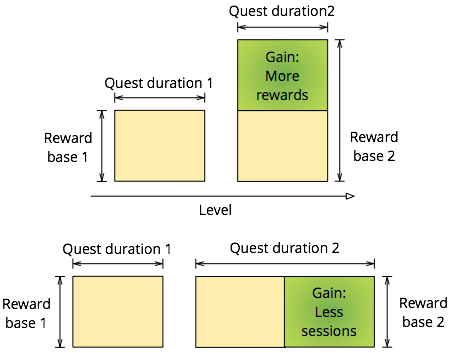
The area of the rectangle defines the reward size
In reality it’s usually a mix of both and either of these gives player a good understanding of their progression, since there’s always a tangible gain.
In Sims Mobile, the progression works differently, and far less intuitively. Playing events unlocks pieces of furniture that discount the timer on quests. At the same time, regardless of your progression in the game (player level) and in the story (career level), your rewards stay similar:

Note the level difference in two different stories, yet the Simoleons earned are the same
To display it as above, the progression in Sims Mobile works like this:
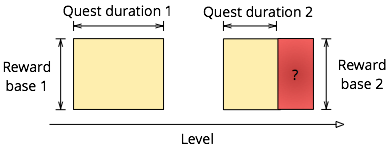
The progression comes in a form of time discount. The result then looks like this:

As a result, player can do more quests and earn more rewards within the same time. This decision is interesting because this is not how we talk about getting a raise in real life. “I’m earning $200 per hour instead of $100 per hour”. In Sims Mobile it’s “I’m earning 200 simoleons in 1 hour instead of in 2 hours”.
We use time, the most stable, straightforward, linear measure as comparison. Relating to different time slots doesn’t feel as an intuitive progression. The different careers also don’t differ enough in earnings (which you would expect with being a barista versus being a top chef) and throughout them, players do not get significantly better off with coins either. This is particularly apparent later in the game when furniture and clothes become gradually more expensive and the player is less and less able to purchase them or complete sets.
From system perspective, the flattened progression is likely trying to balance leveled up Sims with new Sims at the beginning of their careers. This approach doesn’t disadvantage starting new stories, but at the same time also doesn’t validate progression. Comparing rewards of two Sims in the same household at different career stages can feel demotivating.
Would players keep their old Sims forever if the difference would be more significant? Do players value Simoleons higher than story progression?
The combination of predictability of the actions, the lack of story meaning and the fact you don’t need it to play makes energy redundant.
The design of events doesn’t communicate progression naturally. This seems to be a pattern in Sims Mobile: Instead of asking what player cares about, there’s an artificial measurement claiming player that should care… just because.
ISSUE #3: THE CORE LOOP IS BROKEN
When it comes to long term retention, it’s hard not to mention one more substantial shortcomings of Sims Mobile. From a systems perspective, most of the progression feeds into the party loop:
- Parties are where other players can see your home
- Leveling up in hobbies and careers rewards additional furniture that offers new opportunities at parties and allow the parties to reach higher level
- To be seen and rewarded for original clothes also requires to host / visit parties
Systemically you are rewarded through the parties, but it is anticlimactic. There is nothing substantial that you could gain in the party system that you can’t gain somewhere else (XP, Simoleons). Everything about a party is mechanical: The amount of parties you can visit per day, The amount of parties you can host, The amount of energy you have at a party. There is no status to earn, no best-party-host leaderboard. Nothing to push me to become the party master.
Providing social proof at the end of a loop to drive all motivations is good design. However, in this case it is executed poorly by not tying it to some kind of ladder or leaderboard.
The party system isn’t terrible, but it doesn’t justify the existence of all the other loops. Its progress is very far away from day to day activity, and participating in them is optional.
CHARGING INTO THE SOFT LAUNCH
When the game first came out, the gameplay was actually much more similar to Sims: FreePlay. This article is worth checking for an early review. From screenshots and App Store versions we can get an idea how the game looked when first released and what were the major changes.

Energy, hygiene, hunger and happiness were the needs in the early version
A Sim had a set of needs that gets refilled when performing actions. Timers, that lasted hours in the Sims: FreePlay are shortened, yet present. This leads me to assume that Sims Mobile didn’t start from scratch, but took mechanics from Sims: FreePlay for granted.
Looking at the how the versions evolved, we see several trends:
- Most of the design features I described were not present in the soft launch (Events, stories, retirement, Izzy’s store)
- Core loop kept being updated (Party system tied tighter into the core loop, vanity and player level were decoupled at some point)
- Further trickling of the changes (Daily to-do list instead of goals and wishes, adding new currencies)
My theory is that because EA used Sims: FreePlay as a basis, the design was already doomed. They attempted to patch what was there, rather than modernize the design.
FINAL WORD
I can’t help but wonder what would happen if Sims Mobile was instead a port of Sims 4. My designer brain drools with joy over such challenge: Would players enjoy the game? Would the brand be strong enough to rely on vanity only to monetize? Would it be possible to build a system that parallels passive and active gameplay meaningfully?
Instead, with Sims Mobile we end up with a hybrid that tries to achieve everything and nothing.
The Sims is a brand building on freedom of choice. As Matt Brown mentions in his GDC talk, a Sims’ actions and goals are built on improvisation theater’s “Yes and” principle: One thing always leads to next, there is no wrong move, there is no end goal to strive for, and things constantly change. Just like life.
Instead of that, EA Mobile’s latest take on Sims Mobile is constantly afraid to give players space to act on their free will. Intrinsic motivation is replaced with simple reward structures, likely out of fear of losing players without rewarding their every step. Goals are unclear and sessions unrewarding.
As a result, EA Mobile lost both the Sims fanbase and casual players alike.
Guest Author: Eva Grillova
Senior Game Designer, with history at Disney Prague and Wooga.





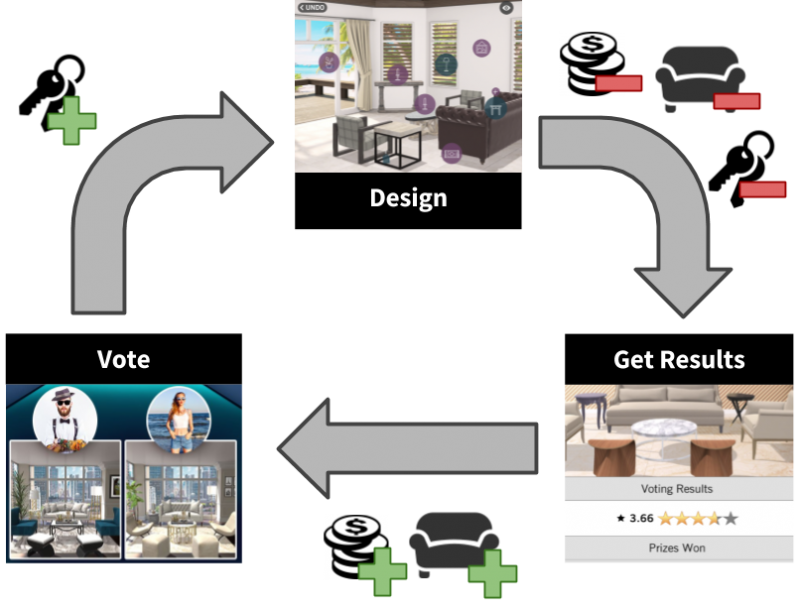
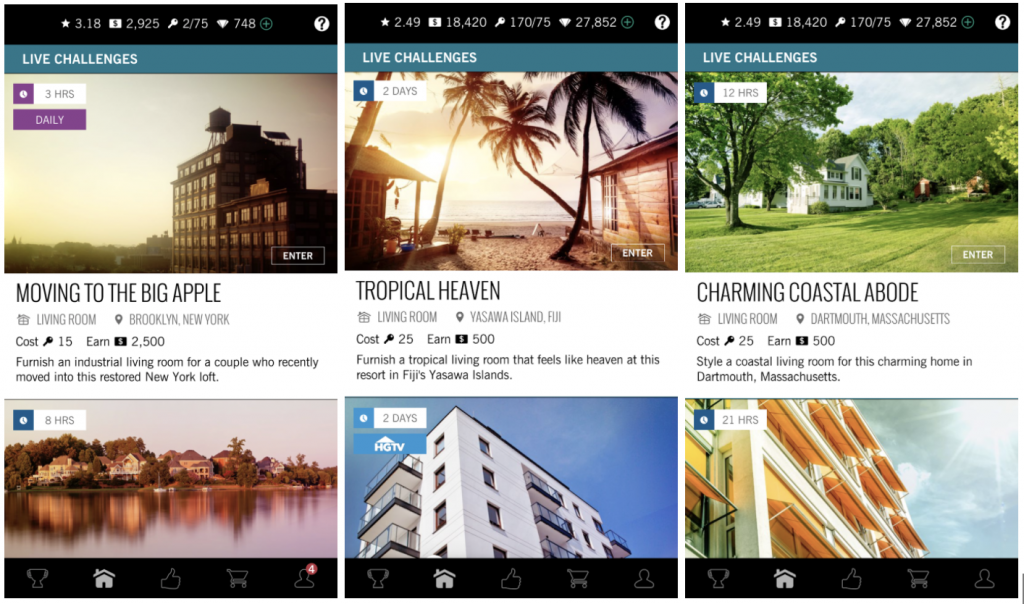
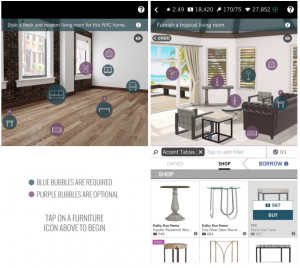
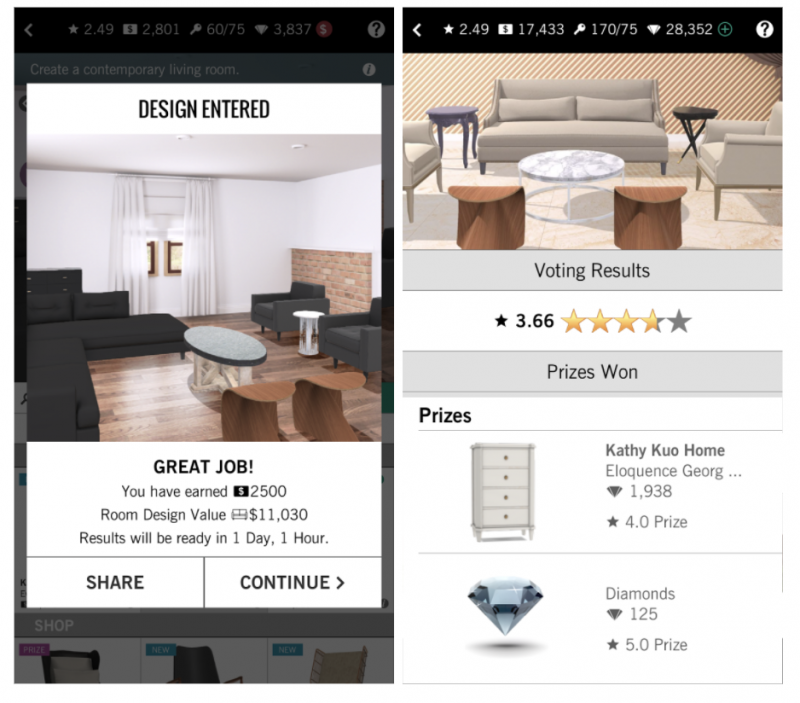 After the voting time is over, a player also receives a bonus reward based on how their design was perceived by the community. The verdict comes in form of a five star rating and if a player exceeds four stars, they will receive a piece of furniture as a reward.
After the voting time is over, a player also receives a bonus reward based on how their design was perceived by the community. The verdict comes in form of a five star rating and if a player exceeds four stars, they will receive a piece of furniture as a reward. 
